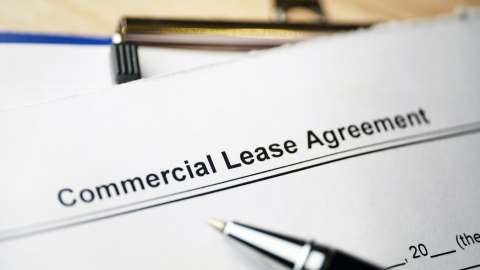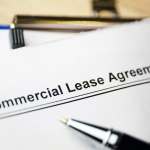What is Commercial Real Estate (CRE)?
While it might not be immediately obvious, commercial real estate is a constant part of our daily lives. Without involving any complex investor lingo, commercial real estate (CRE) is simply defined as any property that produces income for its owner(s). From the office you commute to every weekday to the store where you do your grocery shopping, or from a sleek downtown high-rise to the gas station down the road, every property or lot that has the potential to bring income is considered a commercial property.
Commercial properties are generally classified into four main categories: Office, retail, industrial and multifamily. However, land also has potential for investors, and there are also other types of commercial properties that don’t fit into the previous major categories. What’s more, many larger commercial properties are mixed-use, which means they feature two or more types of commercial real estate within the same campus or building. So, to give you a better understanding of commercial real estate, below is a run-down of the different types of commercial properties and what defines them:
Office Properties
Office properties may come to mind first when you picture commercial real estate. These can include single-tenant buildings, small professional buildings, skyscrapers and everything in between, and are categorized into class A, B or C based on their characteristics and quality:
- Class A buildings are the best of the best. They’re often newer buildings in prime locations with state-of-the-art infrastructure. However, class A can also include older buildings that have been extensively renovated and possess an extensive history and/or prestigious tenants.
- Class B office properties are the next best thing after class A. Although they may seem outdated or simplistic when compared to class A properties, class B office buildings are often the benchmark of an office market and offer great value and services for their prices. And, while these buildings are usually well-maintained and well-managed, the infrastructure may need some capital investment and the location may be less ideal.
- Class C buildings are older, with locations that are unlikely to be advantageous. Often, they’re in need of extensive renovation and updates to their infrastructure. They also usually have lower rental rates to compensate for the lower-quality office space. Additionally, Class C buildings are often vacant longer than higher-classed buildings, and can be targeted for redevelopment opportunities, which aim to improve their class rating.
Because location is key in real estate, office buildings are often defined by neighborhood when they’re listed for sale, rather than by building features. For example, an office space in San Francisco at the heart of the Financial District will be prized for its superior access, prestigious corporate address and proximity to neighborhood amenities, like fine dining and business services. Meanwhile, a New York City solopreneur might prefer a flex space in SoHo (as opposed to the city’s central business district (CBD) in Midtown) due to the former’s atmosphere and networking opportunities.
However, office space in commercial real estate is not restricted solely to metropolitan areas. In fact, suburban office buildings also present unique advantages that may fit some companies better. For instance, suburban office properties are usually mid-rise structures of up to 400,000 square feet of office space. Office complexes that often have innovative, campus-like settings are also included in this category of commercial real estate.
Retail Properties
Retail properties (which include restaurants based on different definitions) are another type of commercial property that may be freestanding — like a bank or a diner — or integrated within mixed-use properties, where they usually occupy prime, first-floor locations. Retail properties abound in strip malls and neighborhood centers, where they’re leased to companies much like separate office spaces are individually leased in an office building.
Notably, malls and retail centers of various sizes may draw different tenants through factors such as location, pedestrian traffic and previously signed tenants.
Industrial Properties
Industrial real estate includes properties used for producing, storing and distributing consumer goods. These properties can range from smaller R&D sites and specialized laboratories to mid-sized warehouses to large, heavy manufacturing sites and regional fulfillment centers.
Industrial spaces, in particular, are often listed with clear height specifications — or the height from the floor to the lowest-hanging overhead obstruction — which could be 14 feet in a small building to more than 40 feet in a large industrial space. Businesses seeking industrial space also look for dock types and availability: Grade-level docks are at street level for drive-in convenience; semi-docks are 24″-high for a pickup or delivery truck; and a full-dock is 48” high for a semi-truck.
Meanwhile, different subtypes of industrial real estate present different opportunities for prospective tenants and investors. For example, heavy manufacturing sites are usually specialized for the single tenant they were developed for, with little room for retrofitting. Conversely, light-assembly industrial properties can be converted for other industrial tenants or even into office or multifamily properties through adaptive reuse. There’s also flex space, which is industrial space meant to be easily reconfigured and may also provide office space for businesses that need both commercial property types.
Multifamily properties
An apartment fourplex or larger is considered commercial real estate for an investor. Sprawling apartment complexes, high-rise condominium units and smaller multi-family units can all be commercial real estate investments. With shorter terms, leases on multifamily structures differ from those in the office and retail space. As a result, they’re more prone to market volatility.
Multifamily structures include garden apartments, which sprung up throughout the nation in the 1960s and 70s, as well as three- to four-story structures without elevators and with surface parking. Additionally, mid-rise apartment complexes are between five and nine stories with an elevator and are often found in urban infill spots. In contrast, high-rise apartment complexes generally have more than 100 units and are professionally managed.
Land
When looking for land to buy, investors try to predict which areas will see the most interest for future development. This may also include undeveloped suburban or urban lots — which are promising as sites for future industrial developments — or urban infill that was left undeveloped.
Other Types of Commercial Properties
Finally, some real estate experts categorize leisure properties (like hotels, public houses, sports facilities, etc.) and healthcare (medical centers, hospitals, medical offices and nursing homes) as separate types of commercial real estate. Other retail offerings include car washes, theme parks, self-storage, bowling alleys, marinas and theatres. All of the aforementioned properties fit the definition of commercial real estate and may see investor interest.
Each type of commercial real estate presents different opportunities and risks for investors, and different characteristics to keep in mind. While everything may seem complex at first, nothing beats experience and cooperation with a real estate expert when trying to enter the commercial real estate market.









